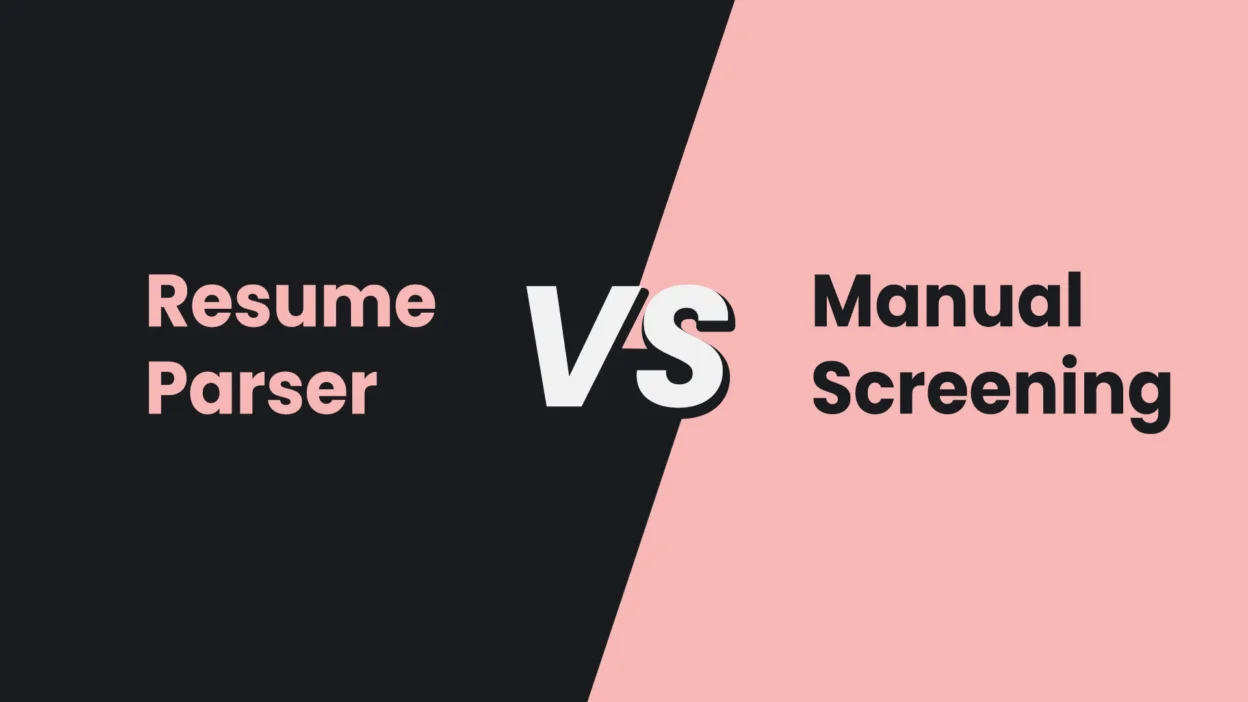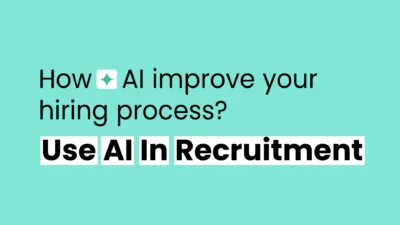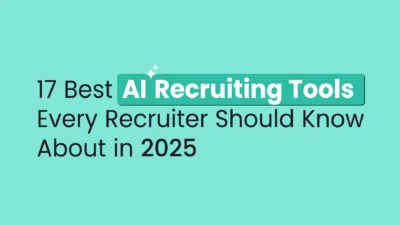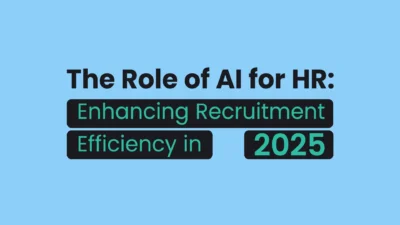A resume parser can help you quickly identify top candidates, while Manual Resume Screening can help you evaluate them more thoroughly.
One of the most critical steps in hiring new employees is screening resumes.
With the advent of technology, two primary methods exist: Automated resume parsers and manual screening.
But which one is better for your business, or best to apply manually or automatic with resume?
Table of Contents
Resume parsers are software programs designed to extract relevant information from resumes automatically. These programs use algorithms and natural language processing (NLP) techniques to identify keywords, skills, and experience.
On the other hand, Manual Resume Screening involves a person reading through each resume to determine each candidate’s qualifications.
Resume Parsing vs. Manual Screening
Recruiters typically rely on two core tactics to decide which applications advance: automated resume parsers and manual screening. Each method shines in different situations, so most companies weave them together rather than picking one over the other.
1. Automated Resume Parsing
What does a resume parser do: Specialized software (often powered by AI or rule‑based algorithms) scans incoming résumés and converts the free‑form text into structured data, job titles, dates, skills, education, contact details, and so on.
Why it’s valuable
- Speed at scale: Hundreds of résumés can be processed in minutes, freeing recruiters for higher‑value tasks like interviews or sourcing.
- Consistency: Machines don’t get tired; they extract the same fields the same way every time, reducing data‑entry errors.
- Volume readiness: Perfect for job postings that earn thousands of applicants or for large graduate‑hiring campaigns.
- Faster candidate feedback: When screening moves quickly, applicants receive updates sooner, boosting employer reputation.
Where it struggles
- Format sensitivity: Unusual layouts, graphics, or funky fonts can confuse the parser and mangle the extracted data.
- Limited context: Algorithms read keywords, not stories, so an unconventional career path or niche skill set might be misjudged.
- Residual errors: Even top‑tier tools need periodic human audits to catch misclassifications or missed information.
2. Manual Resume Screening
How it works: A recruiter or hiring manager reads each résumé, weighing experience, achievements, and culture fit against the job description.
Why it’s valuable
- Nuance and narrative: Humans recognize career pivots, passion projects, and transferable skills that a keyword filter could miss.
- Contextual judgment: A person can spot subtle red flags, gaps, inflated titles, contradictions, or give credit for unique achievements.
- Adaptive criteria: Reviewers can adjust their lens on the fly, valuing non‑traditional backgrounds when the role allows.
Where it struggles
- Time‑intensive: Sifting through a tall stack of applications can slow hiring cycles dramatically.
- Subjectivity: Biases or simple fatigue may lead to inconsistent decisions and overlooked talent.
- Scaling limits: Once application volume spikes, manual review alone becomes impractical.
3. The Hybrid Model (Parse first, read second
- Automated triage: Software screens for must‑have criteria: minimum years of experience, required certifications, location, or specific technologies.
- Human deep dive: Recruiters then examine the smaller, higher‑quality subset for storytelling, culture add, and overall fit.
This two‑step workflow delivers the raw efficiency of automation while preserving the judgment and empathy that only people bring.
4. Deciding the right mix
- Applicant volume: Massive applicant flow almost demands automation; niche or executive searches can rely more on manual review.
- Budget: Parsing tools carry licensing and integration costs; manual processes mainly consume staff hours.
- Risk tolerance: Critical, high‑impact roles may justify extra human scrutiny even after automated filtering.
- Candidate‑experience goals: If quick feedback is key, lean heavier on parsing; if white‑glove personalization matters, keep a larger human element.
Automated parsing is unbeatable for speed, consistency, and high‑volume scenarios. Manual screening excels at understanding nuance, context, and cultural fit. The smartest hiring teams combine both, letting algorithms clear the bulk of the pile, then using human insight to make the final call.
Modern recruiting leans on two complementary tactics for sifting through applications. Resume parsers and manual screening:
| Resume Parsing (Automated) | Manual Screening (Human‑led) | |
|---|---|---|
| How it works | AI/algorithm extracts data – jobs, skills, education, contact details – into a structured database. | Recruiter reads each résumé, judging fit against the job description. |
| Strengths | • Processes hundreds of CVs in minutes. • Removes typos and format noise, delivering clean, searchable data. • Scales effortlessly for mass hiring campaigns. • Quick replies improve candidate experience. | • Spots nuance, context and soft factors algorithms miss. • Catches red flags, gaps and exaggerations. • Applies business judgement beyond keyword matching. |
| Limitations | • Can stumble on creative layouts or graphics.• Struggles with context (“led” vs. “assisted”).• Still needs oversight to catch extraction errors. | • Slow and labour‑intensive; not viable for thousands of applicants.• Subjective bias and fatigue creep in.• Limited scalability without extra head‑count. |
Resume Parsers and Manual Screening Different
Both methods have advantages and disadvantages, so it’s essential to consider the specific needs of your business before choosing one over the other.
1. Time Efficiency in resume parsers and manual screening
Manual Resume Screening:
- Involves human review, which can be time-consuming especially for large volumes of applications.
- Often leads to longer hiring cycles due to the need for in-depth analysis by recruiters.
Automated Resume Parser:
- Uses automated algorithms to extract key information quickly.
- Dramatically reduces the time required to sift through resumes, making it ideal for high-volume recruitment scenarios.
2. Accuracy and Consistency
Manual Resume Screening:
- Human reviewers might introduce bias or inconsistencies during the evaluation process.
- The accuracy depends heavily on the reviewer’s experience and attention to detail.
Automated Resume Parser:
- Provides consistent data extraction based on predefined criteria.
- Minimizes human error, although it may sometimes struggle with non-standard formats or creative layouts.
Magical Resume Score
Discover everything you need to know about Magical Resume Score , how it evaluates your resume, and the various options available to enhance your job application and improve your chances of success.
3. Scalability in resume parsers and manual screening
Manual Resume Screening:
- Can become overwhelming as the number of applications increases, limiting scalability.
- Requires additional resources and manpower when handling a high volume of resumes.
Automated Resume Parser:
- Easily scales to handle thousands of resumes simultaneously.
- Enables recruiters to manage large applicant pools efficiently, making it a cost-effective solution for growing organizations.
4. Cost Effectiveness
Manual Resume Screening:
- Involves higher labor costs due to the time and effort required by skilled recruiters.
- The potential for human error can also lead to higher indirect costs if unsuitable candidates are advanced.
Automated Resume Parser:
- After initial setup, the automated process reduces labor costs significantly.
- Investment in technology can lead to long-term savings and a more streamlined recruitment process.
5. Flexibility and Customization
Manual Resume Screening:
- Offers nuanced judgment and the ability to assess subtle cues in candidate profiles, which may not be captured by automated tools.
- Allows for immediate contextual adjustments based on the role or organizational culture.
Automated Resume Parser:
- Can be customized with advanced filters and AI algorithms to match specific job requirements.
- However, it may require regular updates and maintenance to handle evolving resume formats and industry-specific terminology.
1- Advantages of Automated Resume Parsers
One of the most significant advantages of using a AI Resume Screening is speed. These programs can analyze resumes quickly, allowing you to screen more resumes in less time. This is particularly useful for businesses that receive many resumes for each job posting.
Automated Resume parsers can also be more accurate than Manual Resume Screening. They can identify keywords and phrases that a human might overlook, which can help you identify top candidates more efficiently.
Another advantage of Automated resume parsers is that they can reduce the risk of unconscious bias. Human recruiters can be influenced by factors such as a candidate’s name, education, or work experience. On the other hand, Automated resume parsers are designed to focus on objective factors such as skills and knowledge, reducing the risk of bias.
Read More: How Long Should a Resume Be?
2- Disadvantages of Manual Resume Screening
One of the most significant disadvantages of manual screening is that it is time-consuming. Reviewing each resume manually can take a considerable amount of time, which can slow down the hiring process.
Manual Resume Screening can also be more subjective than using a Automated resume parser. Human recruiters can be influenced by personal biases or emotional factors, such as a candidate’s appearance or the school they attended. This can result in qualified candidates being overlooked or unqualified candidates being selected.
Key Steps in the Manual Screening Process
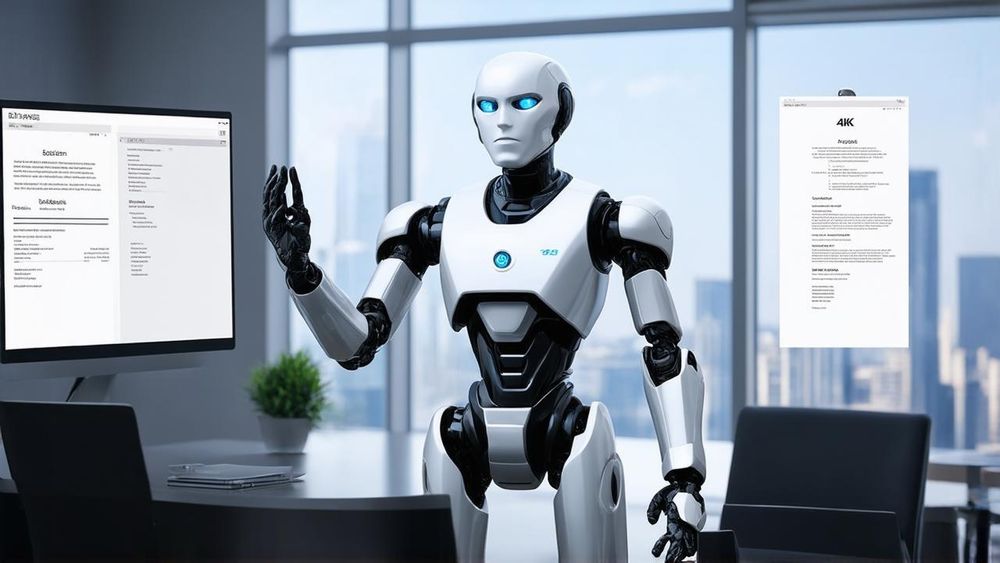
The manual resume screening process typically involves several key steps:
- Initial Review: Scanning resumes to shortlist candidates who meet the basic qualifications.
- Detailed Evaluation: Reading through each resume to assess the candidate’s experience, education, skills, and accomplishments.
- Criteria Matching: Comparing the candidate’s qualifications against the job requirements and identifying any gaps.
- Noting Red Flags: Looking for inconsistencies, unexplained gaps in employment, or other warning signs.
- Shortlisting: Compiling a list of the most promising candidates for further evaluation, such as interviews or additional assessments.
Challenges in Manual Resume Screening
Despite its benefits, manual resume screening presents several challenges:
- Time-Consuming: Reviewing each resume individually can be very time-intensive, especially with a high volume of applicants.
- Subjectivity: Personal biases and inconsistent evaluation criteria can affect the fairness and accuracy of the screening process.
- Human Error: Important details may be missed or misinterpreted during manual review.
- Scalability Issues: As the number of applicants increases, maintaining a thorough and consistent screening process becomes more difficult.
- Reviewer Fatigue and Decision Slippage
After reading dozens of résumés in a row, concentration wanes. Small errors, overlooking a certification, misreading a date, creep in, and qualified candidates can be filtered out simply because they were scanned late in the day. - Hidden or Unconscious Bias
Even well‐trained recruiters may unconsciously favor familiar universities, brand‑name employers, or candidates whose names signal a certain gender or ethnicity. These subtle preferences undermine diversity goals and expose the organization to reputational risk. - Inconsistent Criteria Across Reviewers
Unless every screener follows a rigorous rubric, judgments vary from person to person. One recruiter might consider a two‑month gap irrelevant, while another sees it as a red flag. This inconsistency makes the process unpredictable and harder to defend. - Information Overload
Modern résumés can be packed with links, side projects, portfolios, and certifications. Manually piecing together a coherent picture from so much data slows reviewers and increases the chance they’ll miss something important. - Compliance and Audit Challenges
Many regions require employers to document why each candidate was advanced or rejected. Maintaining thorough, uniform notes on hundreds of manual decisions is burdensome and error‑prone, raising the stakes for legal or regulatory scrutiny. - Higher Operational Costs
The labor hours required for large‑scale manual screening add up quickly, especially when multiple roles open simultaneously. Those costs ripple outward, delaying time‑to‑hire and burdening downstream interviewers. - Candidate Experience Decline
Longer review cycles translate to slower response times. Top applicants often accept other offers while they wait, leading to talent loss and a negative employer brand impression. - Limited Data for Process Improvement
Manual screening produces scattered notes or subjective impressions instead of standardized data points. Without hard metrics, it’s tough to analyze funnel bottlenecks, refine job descriptions, or train recruiters effectively. - Security and Privacy Risks
Manually downloading and emailing résumés increases the chance that sensitive personal information will be stored on unsecured devices or shared beyond authorized staff. - Difficulty Handling Non‑Traditional Formats
Résumés that come as digital portfolios, interactive websites, or short videos can’t be skimmed in the same way as traditional PDFs, slowing reviewers and creating another layer of inconsistency.
Together, these hurdles compound the core issues of time, fairness, and scalability, making a purely manual approach increasingly unsustainable for modern hiring needs.
Read More: Decoding ATS Resumes
Best Practices for Effective Manual Resume Screening
To overcome challenges and enhance the effectiveness of manual resume screening, consider the following best practices:
- Standardize Criteria: Develop clear, objective criteria for evaluating resumes to minimize personal biases.
- Training: Ensure that recruiters are well-trained in effective screening techniques and aware of common pitfalls.
- Use a Checklist: Create a checklist or scoring system to consistently evaluate each resume.
- Balance Speed and Accuracy: While time is important, prioritize accuracy over speed to ensure a thorough review.
- Regular Review: Periodically reassess your screening process and criteria to ensure they remain relevant and effective as job requirements and candidate pools evolve.
Conclusion: Automated resume parsers Vs manual screening
In conclusion, the choice between using an Automated resume parsers and manual screening depends on the specific needs of your business. If you are looking to hire quickly and need to screen a large number of resumes, an Automated resume parser might be the best option. If you are looking for highly specialized skills or a more personalized approach to hiring, manual screening might be a better choice.
Ultimately, the best approach may be to combine both methods. Whatever approach you choose, remember that the most critical factor in hiring is finding the right candidate for your business.
FAQ about Automated Resume Parsers and manual screening, different
What are the advantages of using an Automated resume parser?
Speed, accuracy in identifying keywords and skills, and reduced unconscious bias.
What are the key differences between manual resume screening and using an Automated resume parser?
Manual resume screening involves human recruiters reviewing each resume in detail, relying on experience and intuition to assess a candidate’s qualifications. In contrast, a resume parser uses software to automatically extract and categorize information from resumes, such as contact details, work history, and skills. This automation speeds up the initial screening process and helps manage large volumes of applications, though it may miss contextual nuances that a human reviewer could catch.
What are the benefits and drawbacks of using a resume parser compared to manual screening?
Benefits of Automated Resume Parsers:
Efficiency: Automates data extraction, significantly reducing screening time.
Scalability: Handles large numbers of resumes quickly.
Consistency: Applies uniform criteria to all resumes, minimizing human bias.
Drawbacks:
Contextual Understanding: May overlook subtle details or contextual clues that a human reviewer would notice.
Customization Limitations: Could miss unique qualifications or unconventional resume formats.
Technical Issues: Errors in parsing can occur if resumes are poorly formatted or use uncommon file types.
Can an Automated resume parser completely replace manual resume screening in the recruitment process?
While Automated resume parsers can significantly streamline the initial stages of resume screening by quickly filtering and organizing applicant data, they typically cannot replace manual screening entirely.


